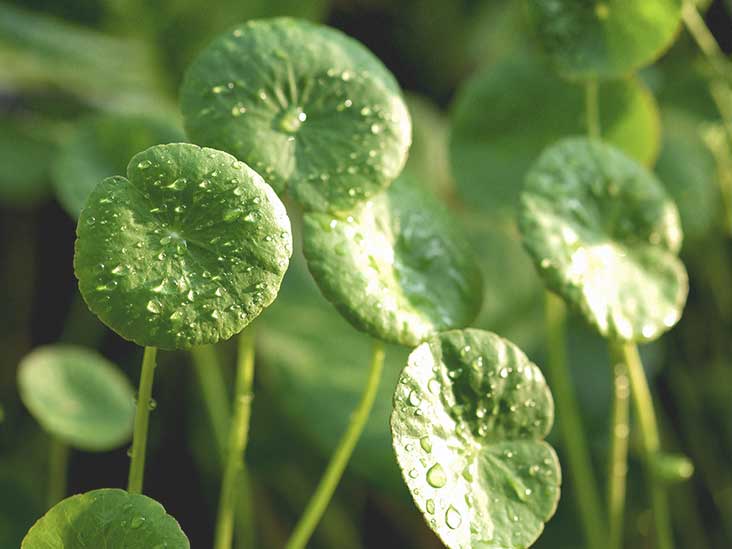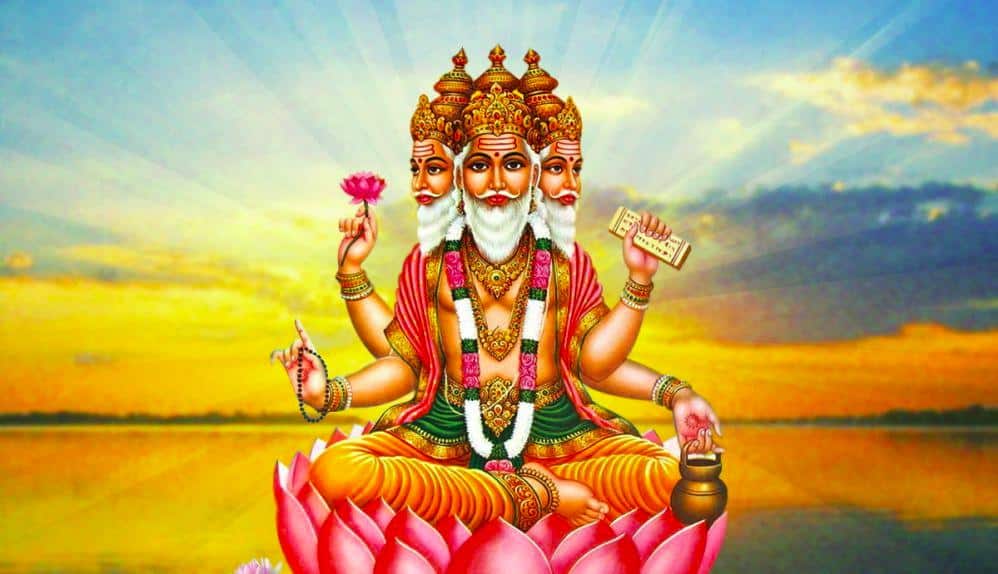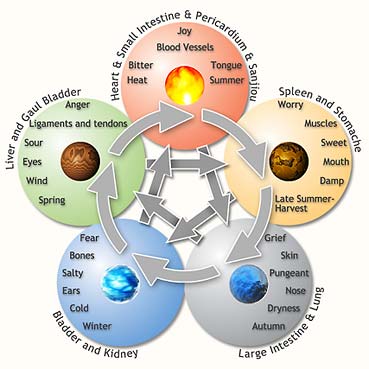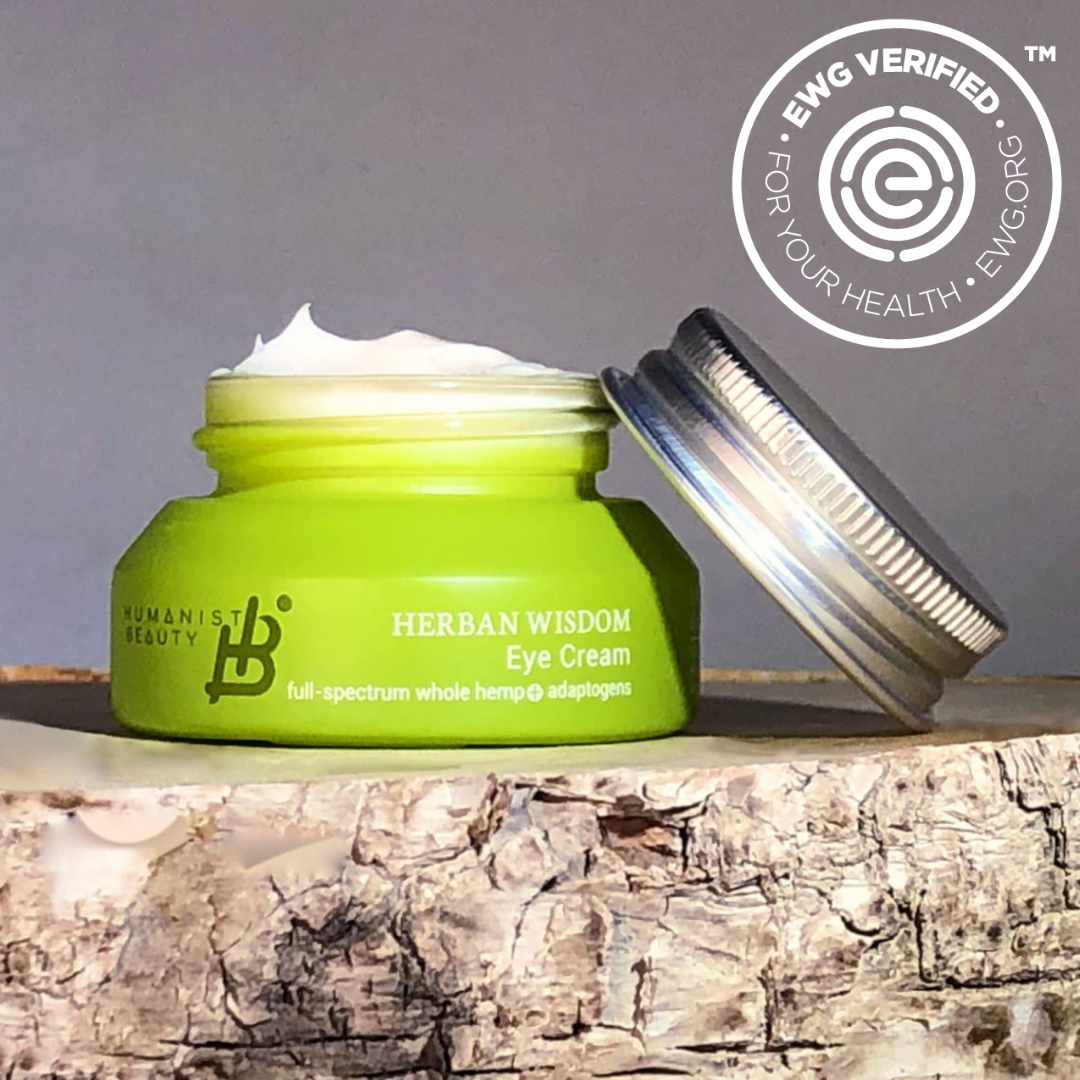Gotu Kola: The Herb of Longevity
Centella asiatica, commonly known as Gotu Kola, is often pegged as the “herb of longevity,” and is a staple in Traditional Chinese and Ayurvedic Medicine. Many practitioners claim that Gotu Kola has the power to boost brainpower, promote liver and kidney health, and target an array of skin concerns. In this blog, we will explore the origins of Gotu Kola in Traditional Chinese Medicine and Ayurveda, along with its vast lineup of medicinal and skincare benefits.
All About Gotu Kola

Pictured: Gota Kola Source: Healthline
Gotu Kola is a perennial member of the parsley family, characterized by its small round leaves. The largest populations of this wetland herb are in the East and South Asian countries of China, Indonesia, and Japan, but it has started to populate other areas of the globe as well.
In Southeast Asia, Gotu Kola is used as much for food as it is for medicinal purposes due to providing an excellent source of essential vitamins and minerals needed to maintain optimal health. It has a distinct bittersweet flavor and a slightly grassy scent.1
A review in the International Food Research Journal mentions that 100 grams of fresh Gotu Kola delivers the following nutrients and meets the following recommended dietary intake (RDI) needs:
- Calcium: 171 milligrams (17% RDI)
- Iron: 5.6 milligrams (31% RDI)
- Potassium: 391 milligrams (11% RDI)
- Vitamin A: 442 micrograms (49% RDI)
- Vitamin C: 48.5 milligrams (81% RDI)
- Vitamin B2: 0.19 milligrams (9% RDI)
According to a review of studies, Gotu Kola contains compounds such as triterpenoid saponins, which researchers believe may be largely responsible for the plant’s purported benefits. These studies have been major contributors to why this substance continues to gain more acceptance around the world.
Gotu Kola in Ayurveda
Gotu Kola is considered to be the plant of knowledge and is highly regarded in Ayurveda as the herb of longevity and anti-aging. The system of Ayurveda reaches back to the period of the Indus Valley Civilization (about 3000 B.C.E) and has been passed down as a healing system through generations.
The Sanskrit word for Gotu Kola is “Brahmi,” which means “knowledge;” and is a derivative of Lord Brahma (or Brahman). Lord Brahma is the deity responsible for the world’s creative forces, and the Hindu name “Brahman” refers to universal consciousness. 2

Pictured: Lord Brahma Source: Vedicfeed
The herb is used in Ayurvedic healing to balance all three doshas, which are the energies believed to circulate in the body and govern physiological activity — Kapha, Pitta, and Vata. Gotu Kola is said to be relaxing for Pitta, calming for Vata in the mind, and beneficial in reducing excess Kapha in the body.3
Ayurvedic doctors Abhishek Joshi and Aparna explain that “The leaves of Gotu Kola resemble the hemispheres of the brain and are used in Ayurveda to boost brain functions. It’s been mentioned as one of the best Medhya Rasayana (brain nootropics), which can enhance cognition, memory, intelligence, creativity, learning skills, and executive functions.”4
Ayurvedic medicine is a personalized system of medicine native to India and is loyal to the holistic view of treatment. Gotu Kola is one of the many health-enriching herbs in the Ayurvedic medicine cabinet, whose value extends beyond one-dimensional, modern medical treatment for issues relating to the mind, brain, and nervous system.
To learn more about Ayurveda, click here.
Gotu Kola in Traditional Chinese Medicine
In Traditional Chinese Medicine (TCM), Gotu Kola, or Ji Xue Cao, is used to soothe inflammatory and infectious conditions, referred to as “Internal Heat.” Those who have too much “heat” in their body are said to either have a Yang excess or a Yin deficiency. Depending on an individual’s condition, TCM practitioners use Gotu Kola to help restore a harmonious balance between Yin and Yang.5
Additionally, “The Five Element Theory” in TCM states that the taste of ingredients is a key determinant of their action in the body and what organs and meridians they target. Bitter ingredients like Gotu Kola tend to have a cleansing action on the body and can promote the circulation of Qi, which is one of the building blocks of TCM.6
Gotu Kola is thought to target the spleen, kidney, and liver. In TCM, the spleen assists with digestion and blood coagulation, while the kidneys play a crucial role in the reproductive system and aging process of the body. The liver is often referred to as the body’s “general” as it’s in charge of regulating the movements of Qi and takes a leading role in balancing our emotions.7

Pictured: The Five Element Theory Source: Earthway
Gotu Kola’s use in TCM is mentioned in the Chinese Shennong Herbal, which was written around the 1st century CE. It’s been called one of the “miracle elixirs of life,” especially by Chinese herbalist Li Ching-Yun, who some believe lived to the age of 197 and reportedly used Gotu Kola regularly. Today, the herb is still widely used by many TCM practitioners.
To learn more about Traditional Chinese Medicine, click here.
The Benefits of Gotu Kola
Due to Gotu Kola’s anti-inflammatory benefits, as well as its ability to promote overall mental and physical health, Gotu Kola has been a staple in traditional systems of medicine for millennia. Here’s a deeper look into the science-backed benefits of Gotu Kola:
Gotu Kola May Help Boost Cognitive Function and Treat Alzheimer’s Disease
A small 2016 study compared the effects of Gotu Kola extract and folic acid in boosting cognitive function after a stroke. This small study assessed the impact on three groups of participants taking different milligram doses of Gotu Kola daily. Although Gotu Kola and folic acid were equally beneficial in improving overall cognition, Gotu Kola was more effective in improving the memory domain.8, 9
Gotu Kola’s ability to enhance memory and nerve function gives it potential in treating Alzheimer’s disease. One 2012 study found that Gotu Kola extract had a positive effect on behavioral abnormalities in those with Alzheimer’s disease.10 The extract was also shown to have a modest effect on protecting brain cells from toxicity, which could potentially protect the cells from forming the plaque associated with Alzheimer’s.
Gotu Kola May Help Reduce Anxiety and Stress
A 2016 study found that Gotu Kola had an anti-anxiety effect on participants that were sleep deprived for 72 hours. Sleep deprivation can potentially lead to anxiety, oxidative damage, and neuroinflammation.11 Those that were given Gotu Kola for five consecutive days before undergoing sleep deprivation experienced significantly less anxiety-like behavior, along with improved locomotor activity and less oxidative damage.
Additionally, Gotu Kola protects the brain from inflammation, which is thought to be an underlying cause of depression. Studies have found that Gotu Kola increased participants’ calmness, contentedness, and alertness, thus reducing the symptoms of anxiety and depression.12, 13
Gotu Kola May Improve Circulation and Reduce Swelling
Another benefit that Gotu Kola is most known for is its ability to improve blood circulation, which can speed up the skin’s healing process and make it effective in treating varicose veins, broken capillaries, and cellulite. This also can aid individuals struggling with hair loss as better circulation means improved delivery of nutrients and oxygen to the scalp.14
Research from 2001 found that Gotu Kola can also reduce fluid retention and ankle swelling. Participants who experienced mild-to-moderate superficial venous disease with varicose veins were asked to take Gotu Kola two days before taking a flight. Researchers found that participants who took Gotu Kola experienced significantly less fluid retention and ankle swelling than those who didn’t.15
Gotu Kola May Reduce the Signs of Aging and Promote Hydration
Gotu Kola is rich in triterpene saponins, which is a compound that helps keep skin tighter and firmer, and is also a great source of phytonutrients called flavonoids that act as antioxidants and fight off free radical damage. As such, Gotu Kola can boost the formation of collagen and skin tissue, which is crucial in maintaining the skin’s elasticity and youthful glow.
In one study, published in Clinical, Cosmetic, and Investigation Dermatology in 2017, researchers tested out a fluid containing hyaluronic acid, glycerin, and Gotu Kola extract on 20 women’s forearms over the course of one day. One arm got the fluid while the other forearm got a control cream.
The researchers measured the hydration level and the amount of water lost throughout the day. Results showed that the arm that got the Gotu Kola fluid showed significantly more hydration and less water loss compared to both the participants’ baseline measurements and the control.16
Gotu Kola May Promote Wound Healing and Reduce the Appearance of Stretch Marks
In a 2015 study, researchers found that wound dressings containing Gotu Kola had healing effects on multiple types of wounds, including burns, clean cuts by sharp objects, irregular tears caused by blunt-force trauma, and infected tissue.17
According to a 2013 review, Gotu Kola can also reduce the appearance of stretch marks. It’s thought that the terpenoids found in Gotu Kola can increase collagen production in the body, which may prevent new marks from forming, as well as help fade any existing marks.18
The Humanist Beauty Herban Wisdom® Eye Cream

Gotu Kola is integrated into the Humanist Beauty Herban Wisdom® Eye Cream for its antibacterial, anti-viral, anti-inflammatory, anti-ulcerogenic, anxiolytic, and circulatory stimulating properties. Its ability to calm inflammation and swelling, speed up wound healing, stimulate new cell growth, improve circulation, and increase collagen production make it a vital ingredient in the Humanist Beauty Herban Wisdom® Eye Cream.
You can shop the Humanist Beauty Herban Wisdom® Eye Cream here.
References:
https://www.bbc.co.uk/food/recipes/gotu_kola_sambol_27863 [1]
https://www.ayurvedacollege.com/blog/brahmi/ [2]
https://doshaguru.com/gotukola/ [3]
https://ayurvedaexpert.in/about-us/ [4]
https://jamanetwork.com/journals/jama/article-abstract/338797 [5]
https://www.tcmworld.org/what-is-tcm/the-five-major-organ-systems/ [7]
https://www.ncbi.nlm.nih.gov/pmc/articles/PMC4908235/ [8]
https://www.ncbi.nlm.nih.gov/pmc/articles/PMC4764102/ [9]
https://www.hindawi.com/journals/ijad/2012/381974/ [10]
https://pubmed.ncbi.nlm.nih.gov/26848139/ [11]
https://pubmed.ncbi.nlm.nih.gov/23653088/ [13]
https://pubmed.ncbi.nlm.nih.gov/11666121/ [15]
https://www.ncbi.nlm.nih.gov/pmc/articles/PMC3834700/ [16]
https://www.sciencedirect.com/science/article/abs/pii/S037851731500486X?via%3Dihub [17]







